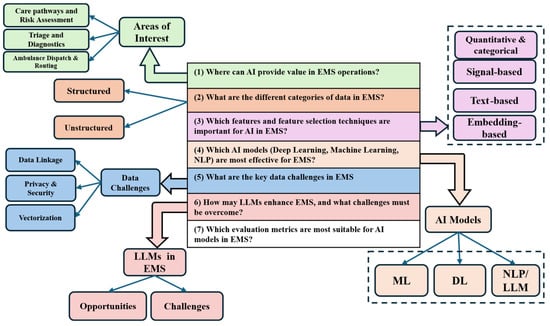-
 Cognitive Networks and Text Analysis Identify Anxiety as a Key Dimension of Distress in Genuine Suicide Notes
Cognitive Networks and Text Analysis Identify Anxiety as a Key Dimension of Distress in Genuine Suicide Notes -
 Image First or Text First? Optimising the Sequencing of Modalities in Large Language Model Prompting and Reasoning Tasks
Image First or Text First? Optimising the Sequencing of Modalities in Large Language Model Prompting and Reasoning Tasks -
 Enhancing Recommendation Systems with Real-Time Adaptive Learning and Multi-Domain Knowledge Graphs
Enhancing Recommendation Systems with Real-Time Adaptive Learning and Multi-Domain Knowledge Graphs -
 State of the Art and Future Directions of Small Language Models: A Systematic Review
State of the Art and Future Directions of Small Language Models: A Systematic Review -
 CNN-Based Framework for Classifying COVID-19, Pneumonia, and Normal Chest X-Rays
CNN-Based Framework for Classifying COVID-19, Pneumonia, and Normal Chest X-Rays
Journal Description
Big Data and Cognitive Computing
- Open Access— free for readers, with article processing charges (APC) paid by authors or their institutions.
- High Visibility: indexed within Scopus, ESCI (Web of Science), dblp, Inspec, Ei Compendex, and other databases.
- Journal Rank: JCR - Q1 (Computer Science, Theory and Methods) / CiteScore - Q1 (Computer Science Applications)
- Rapid Publication: manuscripts are peer-reviewed and a first decision is provided to authors approximately 24.5 days after submission; acceptance to publication is undertaken in 4.6 days (median values for papers published in this journal in the first half of 2025).
- Recognition of Reviewers: reviewers who provide timely, thorough peer-review reports receive vouchers entitling them to a discount on the APC of their next publication in any MDPI journal, in appreciation of the work done.
Latest Articles
Highly Accessed Articles
Latest Books
E-Mail Alert
News
Join Us at the MDPI at the University of Toronto Career Fair, 23 September 2025, Toronto, ON, Canada

MDPI INSIGHTS: The CEO’s Letter #26 – CUJS, Head of Ethics, Open Peer Review, AIS 2025, Reviewer Recognition
Topics
Deadline: 31 October 2025
Deadline: 31 December 2025
Deadline: 31 January 2026
Deadline: 31 March 2026
Conferences
Special Issues
Deadline: 25 September 2025
Deadline: 30 September 2025
Deadline: 30 September 2025
Deadline: 30 September 2025



























